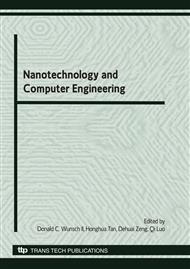[1]
Kouroussis, G., Verlinden, O., Champenois, O., Conti, C., Multi-body model of a competition kart accounting for the chassis flexibility, Proceeding of the 7th )ational Congress on Theoretical and Applied Mechanics, Mons (Belgium), May 29-30. National Committee for Theoretical and Applied Mechanics (2006).
Google Scholar
[2]
Kmiec, D., McConville, J., Structural flexibility influence using ADAMS/FEA, Proceedings of the 1996 International ADAMS User Conference, Michigan (1996).
Google Scholar
[3]
Maeck, J., Roeck, G., Experimental and numerical modal analysis of a concrete high speed train railway bridge, Proceedings of MCCI 2000 International Symposium on Modern Concrete Composites & Infrastructures, Beijing(China), Vol 2, pp.61-68 (2000).
Google Scholar
[4]
Clarich, A., Pediroda, V., Padovan, L., Periaux, J., Poloni, C., Application of game strategy in multi-objective robust design optimization implementing self-adaptive search space decomposition by statistical analysis, Jyvaskilaa, ECCOMAS (2004).
DOI: 10.2514/6.2004-6511
Google Scholar
[5]
Roberto, H., Li, Y.F., Kenn, O., Kon, S., Huang, X. H., Dual-stage servo systems and vibration compensation in computer hard disk drives, Control Engineering Practice , Vol. 15 (3), pp.291-305 (2007).
DOI: 10.1016/j.conengprac.2006.09.003
Google Scholar
[6]
Meo, M., Zumpano, G., On the optimal sensor placement techniques for a bridge structure, Engineering Structures, Vol. 27, pp.1488-1497 (2005).
DOI: 10.1016/j.engstruct.2005.03.015
Google Scholar
[7]
Chang, S. H., Kim, P. J., Lee, D. G., Choi, J. K., Steel-composite hybrid headstock for high-precision grinding machines, Composite Structures, Vol. 53, pp.1-8 (2001).
DOI: 10.1016/s0263-8223(00)00173-2
Google Scholar
[8]
Karagulle, H., Malgaca, L., Oktem, H. F., Analysis of active vibration control in smart structures by ANSYS, Smart Mater. Struct. Vol. 13, pp.661-667 (2004).
DOI: 10.1088/0964-1726/13/4/003
Google Scholar
[9]
Arman, E., Degrauwe, D., Reynders, E., De Roeck, G., Application of fuzzy uncertainty in updating of FE-models,. In : 7th )ational Congress on Theoretical and Applied Mechanics 7th )ational Congress on Theoretical and Applied Mechanics (2006).
Google Scholar
[10]
Blundell, M., Harty, D., The multi-body systems approach to vehicle dynamics, Elsevier Butterworth-Heinemann (2004).
Google Scholar
[11]
Biancolini, M. E., Baudille, R., Reccia, L., Integrated multi-body/FEM analysis of vehicle dynamic behavior, Proceeding of the 29th FISITA World Automotive Congress, Helsinki (2002).
Google Scholar


